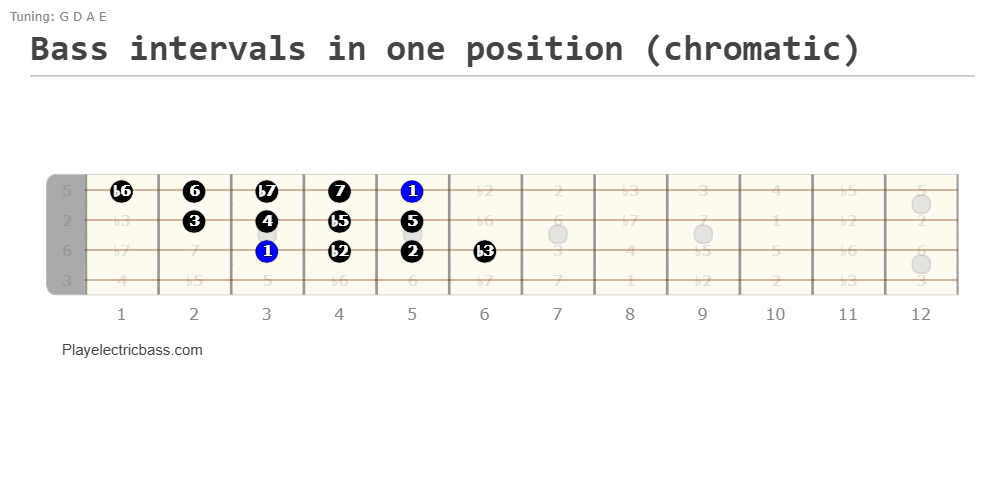This is an easy, but effective chromatic scale bass lesson.
The chromatic scale is not a difficult scale to understand, so let’s dive right into it.
What is the chromatic scale?
The chromatic scale is a 12-note scale that includes every pitch in Western music, moving in half steps (semitones) from one note to the next.
Unlike major or minor scales, it doesn’t skip any notes.
Bassists use it to create tension in music, build technique with simple chromatic exercises, and improve fretboard knowledge by practicing the scale in all octaves.
Notes in the chromatic scale
The chromatic scale has 12 notes. Starting on the root note C, they are:
C – C♯/Db – D – D♯/Eb – E – F – F♯/Gb – G – G♯/Ab – A – A♯/Bb – B – (back to C)
Chromatic scale bass fretboard diagram (showing intervals)

Chromatic Scale One Octave Bass Fingering

Chromatic scale bass tab PDF
Practicing and applying the chromatic scale on bass
Now that you understand the chromatic scale, it’s time for you to apply it.
For starters, practice the one octave chromatic shape in multiple root note positions. This will help you get a feel for how it sounds.
Second, when using scales like the minor pentatonic scale or major scale, try incorporating chromatic passing tones. They’re notes that aren’t part of the main scale, so use them in between 2 notes in your primary scale, and they’ll act as a way to move from one note to another.
That’s it!
Thanks for reading, and enjoy practicing this new, foundational scale on your bass.

